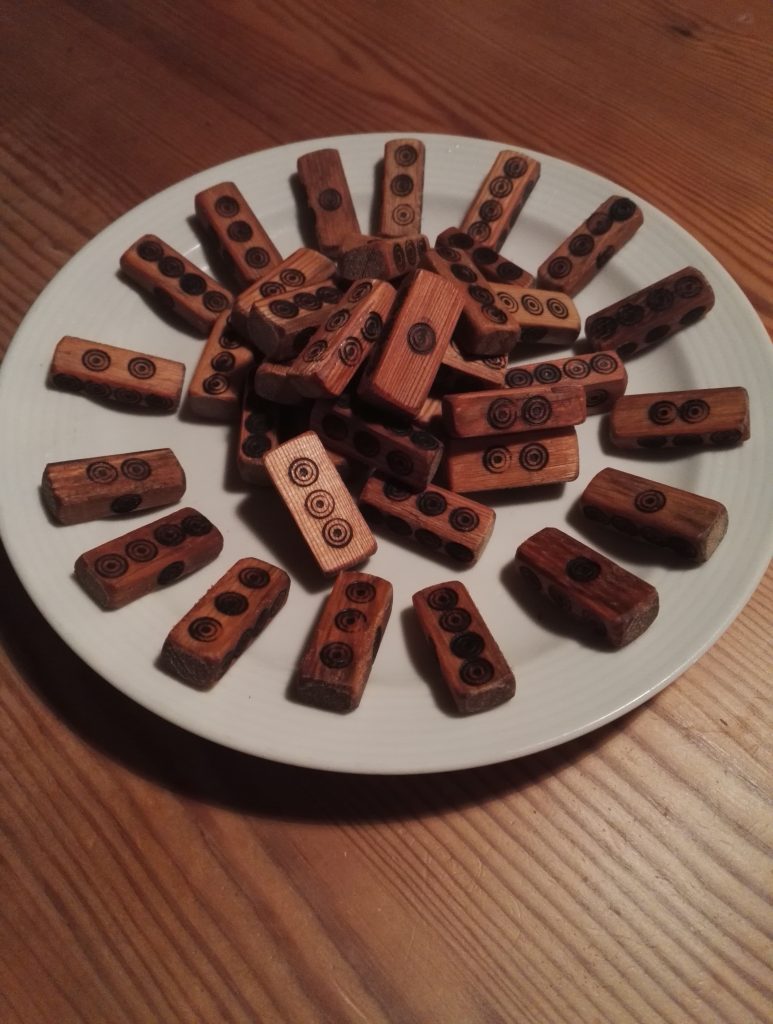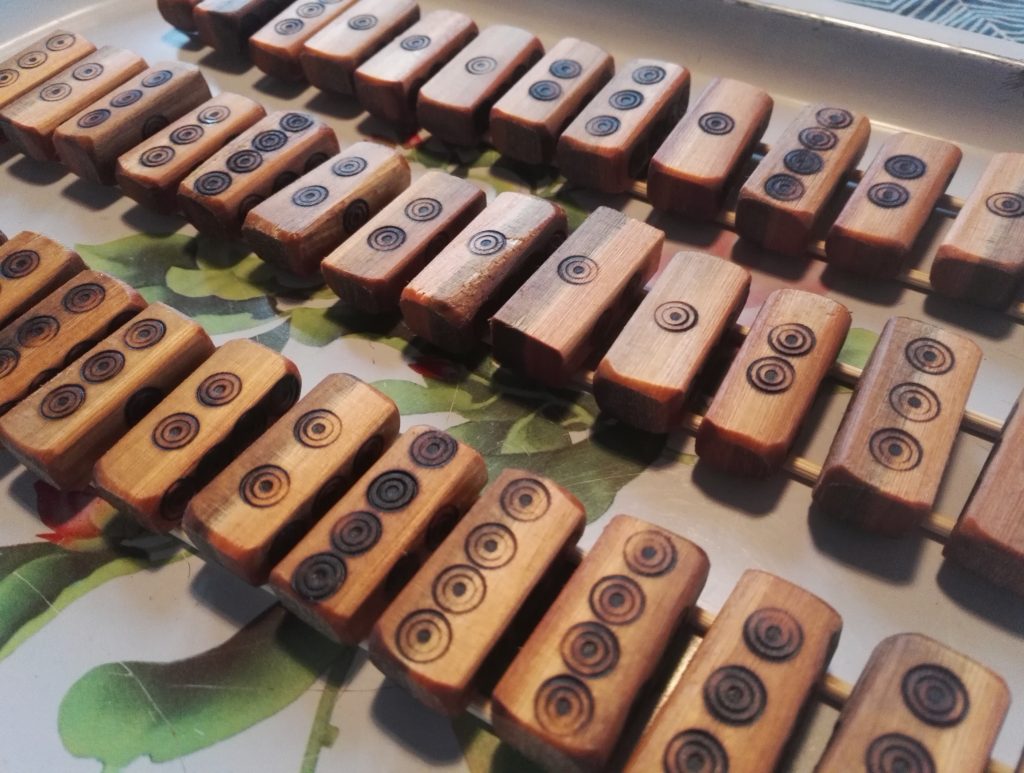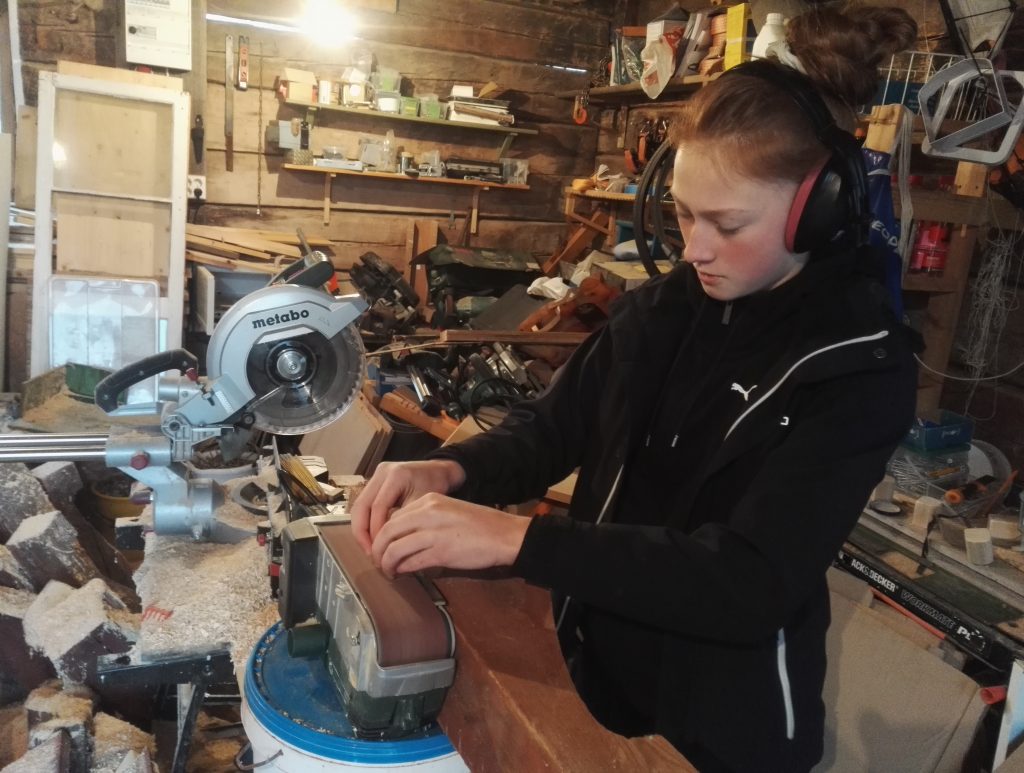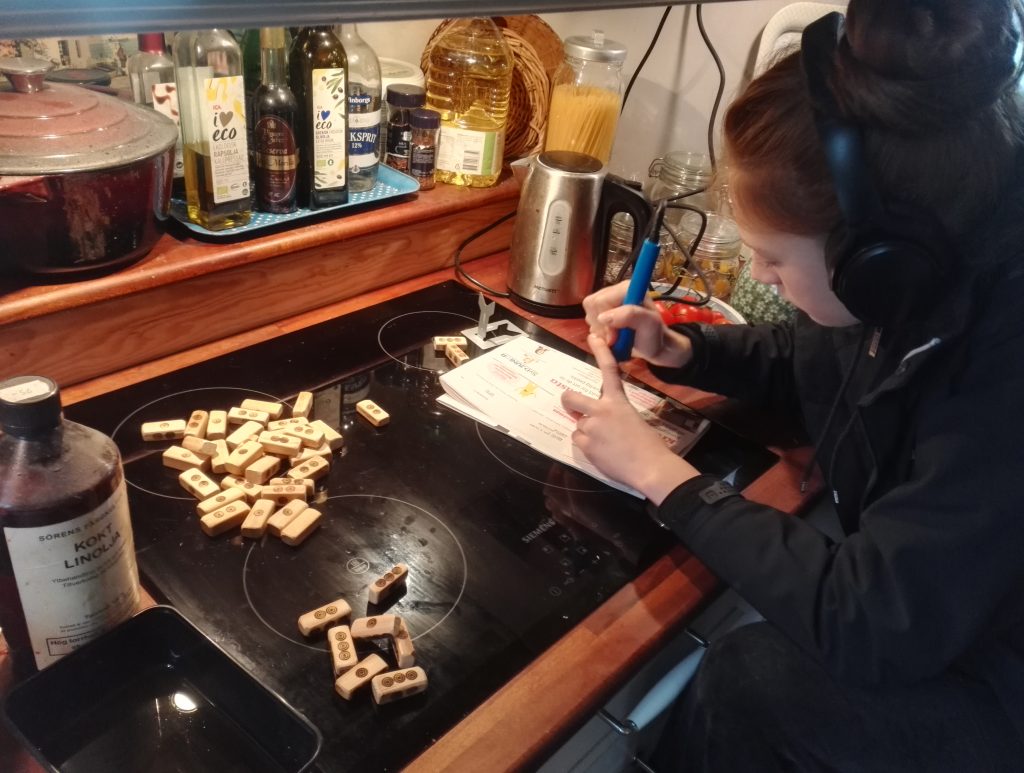These dice, or guides as they are also called, were used in most cultures on the island of Chartagon. The guides are asymmetrically designed and have the numbers 1 through 4. They are usually used in pairs, both for playing games and for making decisions. The asymmetry in the guides was considered to reflect the asymmetry in the probabilities of reality, and when two people met, new unique combinations of probabilities always emerged. The children at Chartagon got their first guides sometime around the age of 6, and during their upbringing, it was common to exchange one guide at a time with other people, until the guides found their chosen person, which was often in their 20s. The couple then followed the same person for the rest of their lives and also followed in its grave. Some guides were made of bone, others of metal or clay, but most were made of different types of wood. More information about Chartagon and these guides can be found on the webpage www.chartagon.com.

On the other side this paper is one of the games where the guides were used as dice. The game is to get across the map as quickly as possible, to the starting position of an opponent. When the game starts everyone chooses their starting point by putting a forefinger on a post on the beach to the island. It is also possible to point with a pen or match if the paper gets crowded. The starting posts should be far apart. You then take turns clockwise to roll your two dice with your free hand. You can use both dice if you want, so sometimes you can move two paths in one turn, and it doesn’t matter in which order you use the dice. If a dice matches the number on a path from your current post, you may move your finger along that path to the next point. If you do not want to use any of the dice in that way you may use the sum or difference to get a number to move with, or you can stay on the post. You can be multiple players at the same post. The player who first arrives at an opponent’s starting position wins the round! If several players arrive at the same number of dice, it will be a draw. The winner often received a small reward from the other players eg. a small treat or a fruit.
The guides that we make gets as close as possible to the original guides, and are hand made from 200 year old pine tree wood. Unfortunately we only have enough wood for a couple of hundreds of pairs, so check out the store before they are sold out!



